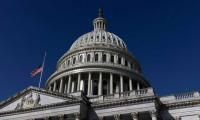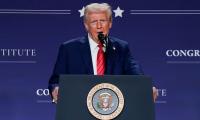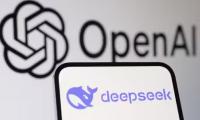Imagine a world where the truth feels increasingly fragile, where falsehoods spread faster than facts, and trust in institutions, media, and even one another erodes by the minute. This is not a dystopian fantasy but our reality.
From online conspiracies that undermine trust in institutions to viral misinformation that fuels division across political lines and distorts public perception, disinformation affects all sides of the spectrum. Its appeal lies in its simplicity: false narratives often provide quick fixes or affirm comforting biases, making them more palatable than the complexities of reality. As a result, we are not just victims of disinformation but sometimes also its enablers – drawn to stories that align with what we wish to believe.
History, however, teaches us that no crisis is insurmountable. If anything, the age of disinformation is self-limiting by its very nature. The erosion of credibility and growing public awareness may ultimately turn the tide, but only if we act with urgency and intention. The challenge of disinformation is deeply personal to me. I have always valued clarity and truth, but navigating today’s digital landscape often feels like separating light from shadow. The overwhelming flow of information can leave even the most diligent thinkers uncertain about what to believe. That’s why I believe strongly in our collective ability to adapt.
Every technological leap reshapes society, creating both opportunities and challenges. The printing press, for instance, democratised knowledge and fueled transformative movements like the Reformation, but it also enabled the rapid spread of propaganda and misinformation. Similarly, social media platforms have revolutionised communication, connecting billions of people worldwide. Yet they also amplify disinformation, create echo chambers and deepen polarisation.
Take this statistic: over 4.89 billion people globally use social media. The sheer scale of these networks makes the containment of falsehoods a monumental challenge. Professional journalism, fact-checking institutions, and regulatory frameworks emerged in response to the printing press’s unintended consequences. Today, we need a similar evolution to address the digital age’s challenges.
But technology alone won’t save us. It has given rise to tools like AI, which can detect falsehoods, flag harmful content, and verify authenticity. The same AI, nevertheless, is also being used to create deepfakes and bot-driven disinformation campaigns, reflecting the double-edged nature of technological advancement. We must wield these tools carefully, ensuring they are transparent, ethical, and accountable.
One of the thorniest issues in the fight against disinformation is balancing free speech with the need for accountability. As someone who values diverse perspectives, I understand the risks of over-regulation. At its best, free speech fosters dialogue and innovation. But left unchecked, it can enable the spread of harmful falsehoods, undermining public trust and stability.
This tension is reflected in our approaches to moderating content. Decentralised tools like Community Notes, which allow users to flag and contextualise misleading information, show promise in empowering individuals. Yet, these systems are slow to act and susceptible to manipulation by organised groups. Conversely, centralised fact-checkers, while seemingly efficient, often introduce their own biases, alienating those who perceive them as partisan.
The truth lies in a hybrid approach – one that blends institutional oversight with grassroots participation and offers the best chance of tackling disinformation effectively.
If there is one silver lining to the rise of disinformation, it is the emergence of a more sceptical public. The sheer volume of falsehoods has forced many to develop critical thinking skills. People are questioning narratives, cross-referencing sources, and seeking out multiple perspectives. This shift is not just necessary; it is hopeful. Globally, countries like Finland have led the way, integrating media literacy into their education systems. In Pakistan, media literacy could similarly empower individuals to navigate the digital landscape more confidently.
Scepticism is a crucial tool for empowerment. It allows us to push back against manipulation, ask better questions, and demand accountability. But scepticism alone is not enough; it must be paired with tools and systems that support truth.
Disinformation thrives on the erosion of confidence in institutions. It exploits gaps in credibility and preys on societal divisions. But this issue goes far beyond the digital landscape. The falsehoods that gain traction online ripple into everyday life, influencing public health decisions, polarising communities, and even shaping political outcomes.
Modern technology has also placed our worldviews on a collision course, creating a profound fragmentation of truth. Social media amplifies personal biases and isolates individuals in ideological silos, leading to a fractured understanding of reality. Different cultures, beliefs, and even individuals who were once comfortable in their own realities now face a daily barrage of perspectives that challenge their worldview. This has made confusion unavoidable; billions of people are now exposed to conflicting narratives every day. The result is a battle not just over facts, but over the very definition of reality itself. How can a shared truth emerge when technology magnifies our differences? Answering this question is critical to navigating the challenges of the digital age.
While social media often amplifies pre-existing issues, it is also creating problems of its own. The speed and scale at which misinformation spreads were unimaginable in traditional media eras, and the very design of algorithms – prioritising engagement over accuracy – has reshaped how we consume information. The anonymity of online platforms also encourages behaviours that might never occur face-to-face, such as trolling, harassment, and the rapid escalation of conflict.
Social media has simultaneously made it possible for people and cultures to communicate in ways that were previously unimaginable. In many ways, it acts as a hive mind – a collective space where fears, beliefs and biases are shared, reinforced, and sometimes exploited. What once went unspoken is now part of an open, global conversation, for better or worse.
Restoring trust is one of the most significant challenges of our time. It requires transparency in how information is created, verified, and shared. Blockchain-based verification tools, for instance, offer promising ways to ensure authenticity. But trust cannot be rebuilt overnight. Governments can thrive when the public becomes a partner in policymaking, ensuring that efforts to counter disinformation are both inclusive and effective. A renewed commitment to transparency and accountability is critical to this process.
History reminds us that we have faced similar challenges before. During the Spanish flu pandemic of 1918, misinformation about treatments and preventive measures spread rapidly, exacerbating the crisis. A century later, during the Covid-19 pandemic, the spread of misleading health advice continued to create confusion and delay critical actions. Whether through unreliable treatments or incorrect preventive measures, disinformation during global health crises remains a significant issue.
These parallels show that while technology evolves, human susceptibility to disinformation remains constant. The lesson is clear: we must learn from the past and act decisively to counter the challenges of the present.
The age of disinformation is not insurmountable, but addressing it requires a multifaceted approach. This includes media literacy in the shape of education systems that prioritise teaching individuals to think critically, question narratives, and verify information. It also includes hybrid solutions that combine centralised oversight with community-driven tools that can address the limitations of each approach. Third, there is a need for technological innovation using AI and other tools to detect and counter disinformation while respecting free speech. And collaborative governance through which governments, tech companies, and civil society work together to create frameworks that transcend borders, ensuring that communities and individuals are active participants in shaping solutions.
Disinformation is self-limiting by its very nature, but the cost of inaction is too high. The question is not whether the age of disinformation will end but how long it will persist and at what price. By fostering media literacy, embracing hybrid solutions, and making the public partners in policymaking, we can accelerate its decline.
The writer is a barrister and the chairman of the Institute of Research and Reforms (IRR) International and the Rehman Malik Foundation. He tweets/posts @AliRehmanMalik3
In Pakistan, approximately 17% of jobs, in sectors like customer service, manufacturing, and agriculture, are...
Space technology might be right antidote to the Malthusian spectre of climate-driven food and water scarcity
This draconian framework treated inmates as liabilities to be restrained, rather than individuals capable of redemption
Trump’s frustration with the Pakistan government manifested as economic pressure
It often functions more as a way to manage and balance power within the ruling class
If we are indeed a poor developing nation, the lifestyles of our ruling classes speak in a radically opposite manner







